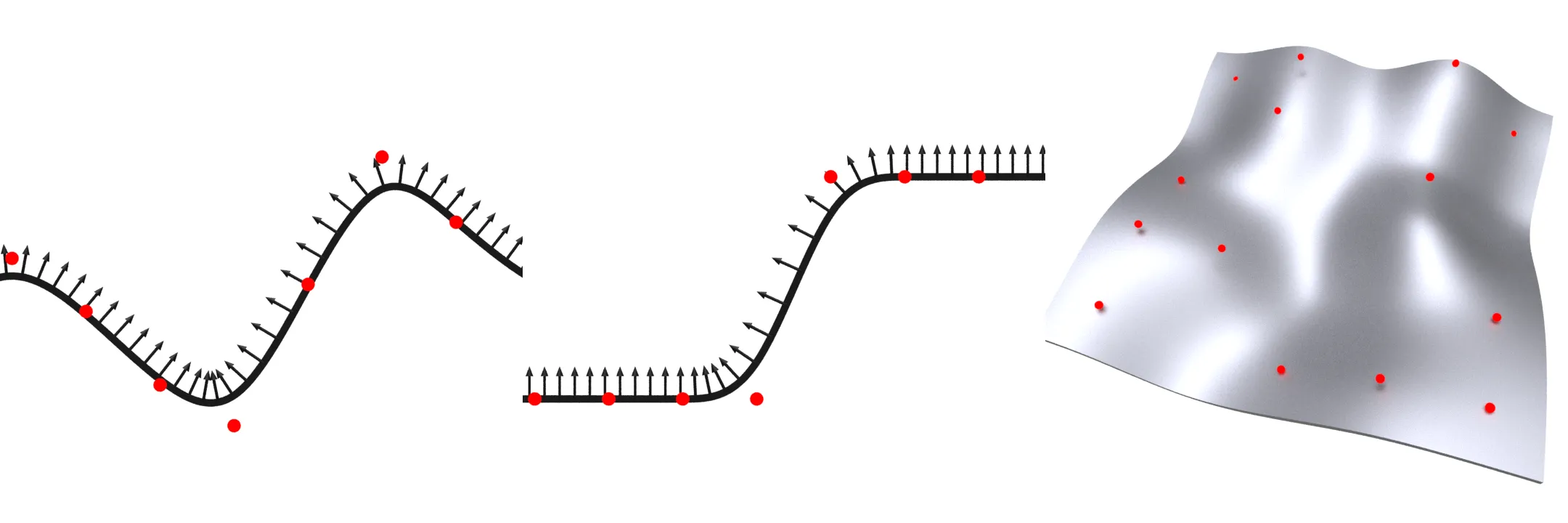volumesmoothsample
float volumesmoothsample(<geometry>geometry, int primnum, vector pos)
float volumesmoothsample(<geometry>geometry, string volumename, vector pos)
float volumesmoothsample(<geometry>geometry, int primnum, vector pos, vector &grad)
float volumesmoothsample(<geometry>geometry, string volumename, vector pos, vector &grad)
float volumesmoothsample(<geometry>geometry, int primnum, vector pos, vector &grad, matrix3 &hess)
float volumesmoothsample(<geometry>geometry, string volumename, vector pos, vector &grad, matrix3 &hess)
<geometry>
When running in the context of a node (such as a wrangle SOP), this argument can be an integer representing the input number (starting at 0) to read the geometry from.
Alternatively, the argument can be a string specifying a geometry file (for example, a .bgeo) to read from. When running inside Houdini, this can be an op:/path/to/sop reference.
Returns
The volume primitive’s sampled value at the given position. Values between voxels are evaluated with smooth interpolation.
The grad and hess arguments return the gradient or the hessian of this sampling function which can be computed at the same time as the value.
Returns 0 if primnum or inputnum is out of range, the geometry is invalid, or the given primitive is not a volume or vdb primitive.
 Example of interpolation of one and two dimensional data using
Example of interpolation of one and two dimensional data using volumesmoothsample. The visualized normal is computed using the grad parameter.
Examples
examples
Section titled “examples”Approximating a volume value at the point P + u using volume values at the point P.
vector P = {1.0, 2.0, 3.0};vector grad;matrix3 hess;float val1 = volumesmoothsample(0, "density", P, grad, hess);
vector u = {0.1, 0.01, 0.001};float val2 = volumesmoothsample(0, "density", P + u);
// By Taylor expansion we have:// `val1 + dot(u, grad)` is approximately equal to `val2`
// And the second order approximation:// `val1 + (u, grad) + 0.5 * dot(u, u*hess)`// is appriximately equal to `val2`